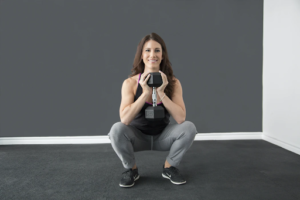If you are suffering from a sore back or joint, chiropractic care is usually recommended as a first-line treatment. Chiropractors can realign vertebrae in your back that may be out of alignment and causing pain or stiffness. They can also help you regain a full range of motion in an injured joint. But how do they do it?
When you visit your primary health care provider, you probably know what to expect: they’ll listen to your heart, check your blood pressure and maybe draw some blood for testing. If you’ve never been to a chiropractor before, it can be helpful to know what to expect from your appointment. The ‘popping’ sound you might be familiar with, is just one small part of the picture.
Chiropractors are trained in over 100 techniques for realigning vertebrae, healing joints, and relieving muscle pain. Your chiropractor may use more than one type of adjustment to treat you, depending on your needs and your overall health. They may also recommend homecare like ice and heat therapy or diet changes. In this article, we will review the seven most common types of chiropractic adjustment.

- Direct Thrust Technique
Also known as ‘spinal manipulation,’ this technique is probably what you think of when you think of chiropractic care. The chiropractor uses a high-velocity, low amplitude thrust (a short, swift movement) to realign your spine. If you are a healthy person with back pain, the odds are good that you will experience this technique during your visit.
Direct thrust produces the cracking or popping sound that most people associate with a chiropractic adjustment. This noise results from gas bubbles leaving the joints when they are moved and doesn’t cause harm to the joints. Despite the alarming sound, this technique does not usually cause any pain or discomfort. In fact, most patients feel better after their appointment. Your chiropractor may apply ice to the area he or she has just treated to help calm down inflammation and encourage healing.
As with all chiropractic techniques, the direct thrust technique is not one size fits all. Your chiropractor will work with you to determine the appropriate amount of pressure to use. He or she may perform this adjustment with their hands or using a small, precise instrument to help direct the pressure. If you take your child or infant to receive this type of spinal manipulation, your chiropractor may use one finger to apply the thrusting pressure.

2.Spinal Mobilization
This technique is used with osteoporosis patients and others who need a gentler touch. The goal is spinal manipulation, but without the pressure that is applied using the direct thrust method.
To perform this adjustment, the chiropractor will use slow stretches and firm (but gentle) pressure to guide the spinal components back into proper alignment.

3.Articulatory
Articulatory adjustments are used for joints outside of the spine, such as ankles, elbows, and knees. The chiropractor moves the joint through its full range of motion using gentle force. If your injured joint is already sore, this technique can involve some discomfort, but it will help relieve stiffness and encourage healing.

4.Myofascial Release
Myofascial tissue is a membrane layer that covers, supports, and connects muscles. Often, the ‘muscle pain’ that we feel is actually due to stiff areas in the myofascial tissue. These are known as ‘trigger points.’ Myofascial trigger points can cause pain in areas distant from the trigger point itself, so your chiropractor will look for trigger points in areas outside of the place where you are feeling pain. Trigger points can also cause joint and muscle stiffness.
During myofascial release, your chiropractor will find your trigger points and apply pressure to loosen them up, restoring free movement and reducing pain. The experience is similar to a deep tissue massage.

5.Muscle Energy Technique
This is an active form of myofascial release that requires patient participation. This technique may be appropriate for you if you have stiff areas of your body that have developed painful trigger points.
Your chiropractor will have you perform specific muscle movements and will apply a counter-pressure to your movement. You will complete several repetitions of this technique, each lasting for several seconds, followed by a rest period. Your chiropractor will shift the position slightly with every repetition to make sure that the treatment is targeting the full range of motion.
The goal of the muscle energy technique is to strengthen weak areas, promote mobility and flexibility, increase circulation, and release trigger points. The end result should be the restoration of movement and reduced pain.

6.Indirect Positional Technique
We usually think of muscle tone as being a good thing, but muscles can become overly toned (hypertonic), or unevenly toned. If your chiropractor determines that hypertonic muscles are interfering with your posture or impairing joint movement, they may use the indirect positional technique to correct the problem.
During this treatment, the chiropractor will hold the affected joint in a neutral position and apply a specific force. Sometimes the goal of the force is to lengthen the muscle; other times, it releases tightness. Over time this treatment can correct posture problems and increase flexibility.

7.Functional Technique
Like articulatory adjustment, the functional technique targets joints in the extremities. Your chiropractor will move the joint through its full range of motion. When a restriction is detected, they will hold the joint at the point of restriction until it releases. The goal is to restore mobility and reduce pain.t





